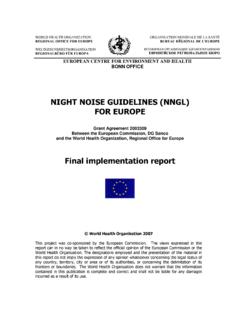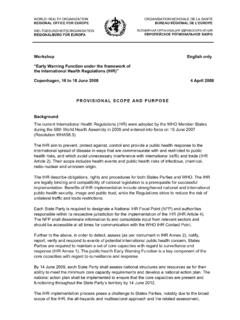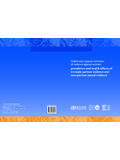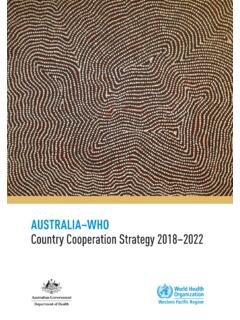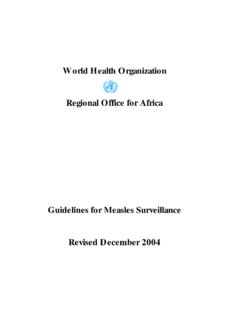Transcription of Eliminating Female genital mutilation - United Nations
1 Eliminating Female genital mutilationAn interagency statementOHCHR, UNAIDS, UNDP, UNECA, UNESCO, UNFPA, UNHCR, UNICEF, UNIFEM, WHOFor more information, please contact:Department of Reproductive health and ResearchWorld health OrganizationAvenue Appia 20, CH-1211 Geneva 27 SwitzerlandFax: +41 22 791 4171E-mail: 978 92 4 159644 2 Eliminating Female genital mutilationAn interagency statementOHCHR, UNAIDS, UNDP, UNECA, UNESCO, UNFPA, UNHCR, UNICEF, UNIFEM, WHO WHO Library Cataloguing-in-Publication DataEliminating Female genital mutilation : an interagency statement UNAIDS, UNDP, UNECA, UNESCO, UNFPA, UNHCHR, UNHCR, UNICEF, UNIFEM, , Female .
2 - surgery. characteristics. 4. International cooperation. health 978 92 4 159644 2 (NLM classification: WP 660) world health organization 2008 All rights reserved. Publications of the world health organization can be obtained from WHO Press, world health organization , 20 Avenue Appia, 1211 Geneva 27, Switzerland (tel.: +41 22 791 3264; fax: +41 22 791 4857; e-mail: Requests for permission to reproduce or translate WHO publications whether for sale or for noncommercial distribution should be addressed to WHO Press, at the above address (fax: +41 22 791 4806.))
3 E-mail: The designations employed and the presentation of the material in this publication do not imply the expression of any opinion whatsoever on the part of the world health organization concerning the legal status of any country, territory, city or area or of its authorities, or concerning the delimitation of its frontiers or boundaries. Dotted lines on maps represent approximate border lines for which there may not yet be full mention of specific companies or of certain manufacturers products does not imply that they are endorsed or recommended by the world health organization in preference to others of a similar nature that are not mentioned.
4 Errors and omissions excepted, the names of proprietary products are distinguished by initial capital reasonable precautions have been taken by the world health organization to verify the information contained in this publication. However, the published material is being distributed without warranty of any kind, either expressed or implied. The responsibility for the interpretation and use of the material lies with the reader. In no event shall the world health organization be liable for damages arising from its use. Printed inContentsEliminating Female genital mutilation : the imperative 1 Why this new statement?
5 3 Female genital mutilation what it is and why it continues 4 Female genital mutilation is a violation of human rights 8 Female genital mutilation has harmful consequences 11 Taking action for the complete elimination of Female genital mutilation 13 Conclusion 21 Annex 1: Note on terminology 22 Annex 2: Note on the classification of Female genital mutilation 23 Annex 3: Countries where Female genital mutilation has been documented 29 Annex 4: International and regional human rights treaties and consensus documents providing protection and containing safeguards against Female genital mutilation 31 Annex 5: health complications of Female genital mutilation 33 References 36 Eliminating Female genital Mutilation1 Eliminating Female genital mutilation .
6 The imperativeThe term Female genital mutilation (also called Female genital cutting and Female genital mutilation /cutting ) refers to all procedures involving partial or total removal of the external Female genitalia or other injury to the Female genital organs for non-medical reasons. Between 100 and 140 million girls and women in the world are estimated to have undergone such procedures, and 3 million girls are estimated to be at risk of undergoing the procedures every year. Female genital mutilation has been reported to occur in all parts of the world , but it is most prevalent in: the western, eastern, and north-eastern regions of Africa, some countries in Asia and the Middle East and among certain immigrant communities in North America and Europe.
7 Female genital mutilation has no known health benefits. On the contrary, it is known to be harmful to girls and women in many ways. First and foremost, it is painful and traumatic. The removal of or damage to healthy, normal genital tissue interferes with the natural functioning of the body and causes several immediate and long-term health consequences. For example, babies born to women who have undergone Female genital mutilation suffer a higher rate of neonatal death compared with babies born to women who have not undergone the procedure. Communities that practise Female genital mutilation report a variety of social and religious reasons for continuing with it.
8 Seen from a human rights perspective, the practice reflects deep-rooted inequality between the sexes, and constitutes an extreme form of discrimination against women. Female genital mutilation is nearly always carried out on minors and is therefore a violation of the rights of the child. The practice also violates the rights to health , security and physical integrity of the person, the right to be free from torture and cruel, inhuman or degrading treatment, and the right to life when the procedure results in death. Decades of prevention work undertaken by local communities, governments, and national and international organizations have contributed to a reduction in the prevalence of Female genital mutilation in some areas.
9 Communities that have employed a process of collective decision-making have been able to abandon the practice. Indeed, if the practising communities decide themselves to abandon Female genital mutilation , the practice can be eliminated very rapidly. Several governments have passed laws against the practice, and where these laws have been complemented by culturally-sensitive education and public awareness-raising activities, the practice has declined. National and international organizations have played a key role in advocating against the practice and generating data that confirm its harmful consequences.
10 The African Union s Solemn Declaration on Gender Equality in Africa, and its Protocol to the African Charter on Human and Peoples Rights on the Rights of Women in Africa constitute a major contribution to the promotion of gender equality and the elimination of Female genital mutilation . 2 Eliminating Female genital mutilation However, despite some successes, the overall rate of decline in the prevalence of Female genital mutilation has been slow. It is therefore a global imperative to strengthen work for the elimination of this practice, which is essential for the achievement of many of the Millennium Development Statement is a call to all States, international and national organizations, civil society and communities to uphold the rights of girls and women.










